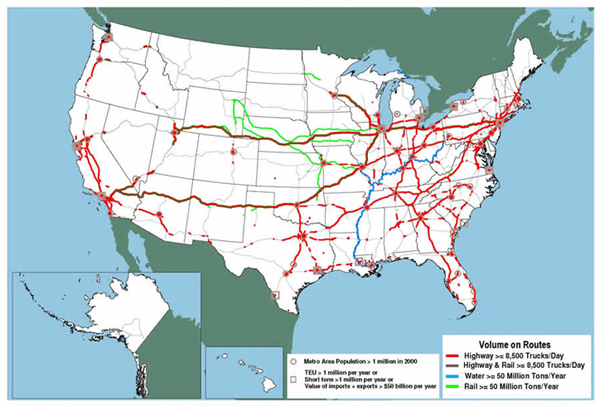One thing that should be clear about the transition to full MC coverage is that fleet operators should have an advantage over independent operators. An independent may have to pass up on loads whenever they are out of range for current network. I don't expect to see I've Road Truckers the Tesla Episode anytime soon. But if your a fleet operator where 20% of your routes are well served by MC network and other infrastructure, then perhaps 10% of your trucks could be Teslas. If you're saving money on that 10% and the other 90% of your trucks are adequate for the 80% beyond reach, then no problem. You save your money on your 10% electric fleet. Next year when you have to replace 5% to 10% of your fleet, you check to see if the MC network and other infrastructure has expanded to cover 30% of your business. If so, you may be able to get your fleet to 20% electric. Year after year, you can keep expanding the electric portion of your fleet as the MC network expands to support that. The bigger your fleet is, the easier it is to take advantage of limited MC coverage. A small fleet or just a single truck would have a harder time making the transition.
I also think that Tesla would be listening to the large fleet owners too. So they could influence how Tesla prioritizes MC rollout. This would advantage the large clients I've smaller ones. The ultimate advantage would go to Tesla. I expect that they will want a fleet to deliver Tesla product. So routes that connect Tesla to its factories and customers will have a natural priority.
Exactly. Pretty easy even for a big fleet operator to identify their "next big route" that the EV trucks can't or don't serve well enough for the fleet to switch, and to work with Tesla on where MCs would need to be added to enable that route, and for Tesla to then prioritize those locations in order to enable the sale of vehicles along the route.
AND it'll be easy for those same fleet operators to be buying and installing their own privately owned and operated MC / SC facilities at their distribution centers (for vehicles that are moving part of the day, and parked part of the day) so they can be recharged while parked.
In fact, I sort of assume (am I wrong?) that fleet owners own and operate their own fueling stations / pumps at their distribution centers. They buy fuel at wholesale, and trucks get topped up when they're "home", saving time on side stops for fuel, and saving the company the retail markup. Clearly not a solution a small or single operator is going to make use of, but a scale advantage available to big enough fleets.
If the US market is 100k trucks/year, I figure Tesla will be doing well to build and deliver 1k trucks in the first year. For that first 1k trucks, private SC and a few showcase MC installations along routes identified with a small subset of potential customers will be plenty of charging support to find buyers for those first few trucks.
That'll be far from a fully developed infrastructure, while also showing signs of life on how we get to a fully developed infrastructure based on real world use and feedback.
In the second year, Tesla would be doing well to build and deliver 10k trucks. That's nothing to 10% market share (in my made up numbers - I haven't been able to find data on US market units) in 2 years, and sounds achievable to me between privately owned fleet charging plus continued expansion of the MC network, where each expansion is intended to support specific routes.
As
@jhm has pointed out previously, the MC network can grow with the truck units and vice versa. You don't need to solve all use cases in order to sell the first unit. You'll get some initial sales to fleets that want to test out the truck in limited and then expanding use cases. Tesla will need to front some of the MC network build, and then continue building the MC network just ahead of purchases by users with specific routes / use cases in mind. Heck - there's no reason Tesla can't get the MC network build department formed and working now with fleet buyers, understanding how many trucks and which routes look most interesting. Aggregate that insight across all of the customers Tesla is talking to, and the first 5 routes to electrify will probably stand out like a glowing neon sign. Get started on land acquisition and permitting now, and those first 5 routes will be ready when the first truck is delivered.



